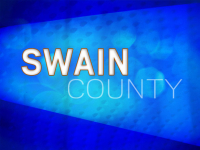McCrae’s new book a must have for local historians
Macon County residents, indeed all local history buffs, are about to receive a great gift from Barbara McRae, editor of The Franklin Press.
Barbara is a noted regional historian with unmatched knowledge, in particular but not exclusively, of Macon County. Whether you’re discussing current events or those happenings that took place long ago, she is the eminent, go-to source.
Though journalists such as myself generally shy from making pronouncements such as “the very first” or “the most qualified” out of fears such bold assertions will prove incorrect, I am confident in asserting no one is more qualified to record Macon County’s history than Barbara McRae — and that she’s both the first word and the last word on this topic.
She has done an exemplary job of compilation in her soon-to-be-released Placenames of Macon County, N.C. Users of The North Carolina Gazetteer by Williams S. Powell will recognize his influence on the construction of Barbara’s book: a place name followed by description and history.
The title of Barbara’s book, though accurate, doesn’t begin to do justice to the quality of research and impressive, nowhere-else-to-be-found historical data. A tell-on-myself personal note is in order: readers would have had Placenames of Macon County, N.C. much sooner if I’d worked more quickly on proofreading the draft. Though woefully late in my delivery of the manuscript (try six months, I believe), I’m thrilled that I had the pleasure of finding an occasional point-size variance or a rare inconsistency in style usage. I beg Barbara’s forgiveness here, in print, for my shameful procrastination.
Barbara is an amazing historian who has, literally, spent years and years researching her topic. No fact is safe with Barbara on its trail. She has pored over old records at the Macon County courthouse, conducted interviews and gleaned what seems every old tale ever related about Macon County for the benefit of us, her readers.
Related Items
A taste of what you can expect include this notation under “Peek,” a familiar place name and family name in Macon County. I’m distilling Barbara’s 10-column inch or so recording of all-things Peek to a few paragraphs to, I hope, provide the flavor of the book and her distinctively succinct, yet personal, writing style.
“Zachariah Peek (also spelled Peak and Peake) and his wife, Sarah Anne Moore, came to Macon County soon after the Cherokees ceded the area by treaty in 1819. He and his brother David were listed in Buncombe County in the 1820 census but apparently moved west the same year … Zachariah obtained several tracts of land, mostly on Ellijay, before his death in 1845. He had eight children, including William Comer “Panther Bill” Peek, who was born in Macon County in 1822.
“Panther Bill got his nickname after killing a panther in a remarkable way. His dogs had the cat penned under a overhanging rock; Bill threw his ax at the animal and killed it instantly, nearly severing its head …
“Peeks Creek took the national spotlight on Sept. 16, 2004, when the community along the creek suffered a disastrous landslide. Heavy rains from the remnants of Hurricane Ivan fell on soil already saturated from the Sept. 7 Hurricane Frances storm. The slide, or debris flow, claimed five lives and 15 homes and left its mark on the mountain.”
Another entry relates the origins of the name Wayah Gap, which the Cherokee called Atahita, “Where they shouted.”
“The name comes from the myth of a giant yellow jacket that once preyed on the Indian children,” Barbara notes. “Sentries posted at the Gap were the first to spot the marauding insect. They gave the shout that led other braves to the beast’s lair. This gap is one of a series of openings in the great wall of the Nantahalas. Historically, it provided the most convenient passage to the west. Tradition (again retold by (Margaret) Mrs. Siler) claimed that during a battle at the gap between Rutherford’s forces and the Cherokees in 1776, one of the slain warriors was found to be a woman.”
It occurs to me that in addition to Macon County residents and general aficionados of local history such as myself, those with family roots in Western North Carolina will find Barbara’s book invaluable. Particularly those living in Swain, Jackson and Cherokee counties I believe, because there seemed to be so much intermingling of people and families from that area. And I learned that salient fact by reading Placenames of Macon County, N.C.
(Quintin Ellison can be reached at This email address is being protected from spambots. You need JavaScript enabled to view it..)









